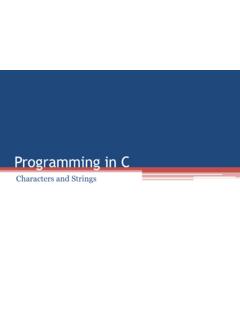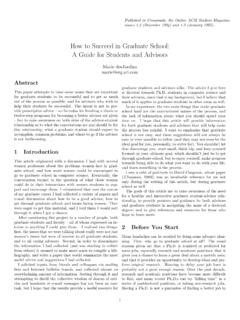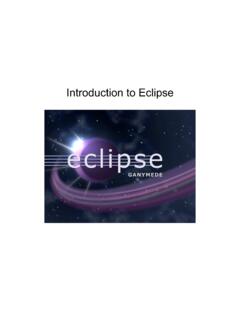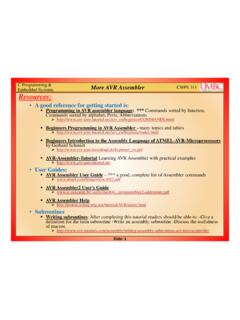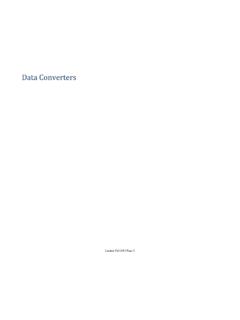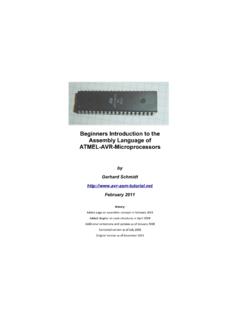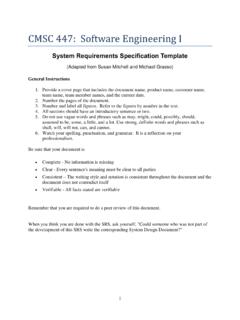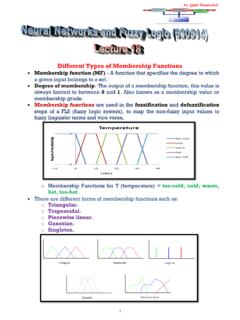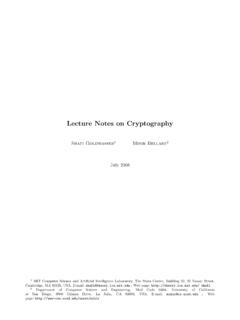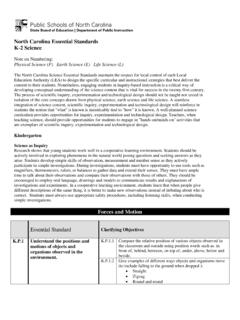Transcription of Instruction Sets: Characteristics and Functions Addressing ...
1 Slides modified from multiple sources1. William Stallings Computer Organization and Architecture, Peckol, Embedded systems DesignCMPE 311 Instruction Sets: Characteristics and FunctionsAddressing ModesWhat is an Instruction Set? The complete collection of instructions that are understood by a CPU Machine Code Binary Usually represented by assembly codesElements of an Instruction Operation code (opcode) Do this: ADD, SUB, MPY, DIV, LOAD, STOR Source operand reference To this: (address of) argument of op, register, memory location Result operand reference Put the result here (as above) Next Instruction reference (often implicit) When you have done that, do this: BRExample: Simple Instruction Format(using two addresses) Instruction Cycle State DiagramDesign Decisions (1) Operation How many ops?
2 What can they do? How complex are they? Data types (length of words, integer representation) Instruction formats Length of op code field Length and number of addresses ( , implicit Addressing ) design Decisions (2) Registers Number of CPU registers available Which operations can be performed on which registers? General purpose and specific registers Addressing modes (see later) RISC v CISCI nstruction Types Data transfer: registers, main memory, stack or I/O Data processing: arithmetic, logical Control: systems control, transfer of controlData Transfer Instructions Are responsible for moving data around inside the processor as well as brining in data or sending data out Examples: Store, load, exchange, move, set, push, pop Each Instruction should have.
3 Source and destination (memory, register, input/output port) amount of datafig_01_16 Data Transfer Instructions ExampleArithmetic Add, Subtract, Multiply, Divide for signed integer (+ floating point and packed decimal) may involve data movement May include Absolute ( |a|) Increment ( a++) Decrement ( a--) Negate ( -a)Logical Bitwise operations: AND, OR, NOT, XOR, CMP, SET Shifting and rotating Functions , logical right shift for unpacking: send 8-bit character from 16-bit word arithmetic right shift: division and truncation for odd numbers arithmetic left shift: multiplication without overflow Different Shift Instructions0S is sign bitSystems Control and Execution Flow The execution flow captures the order of evaluation/execution of each Instruction Sequential Branch Loop Procedure or Function callBranch Skip, , increment and skip if zero: ISZ Reg1, cf.
4 Jumping out from loop Branch instructions: BRZ X (branch to X if result is zero), BRP X (positive), BRN X (negative), BRE X,R1,R2 (equal) Procedure (economy and modularity): call and returnBranch InstructionNested Procedure Callsfig_01_20fig_01_22
